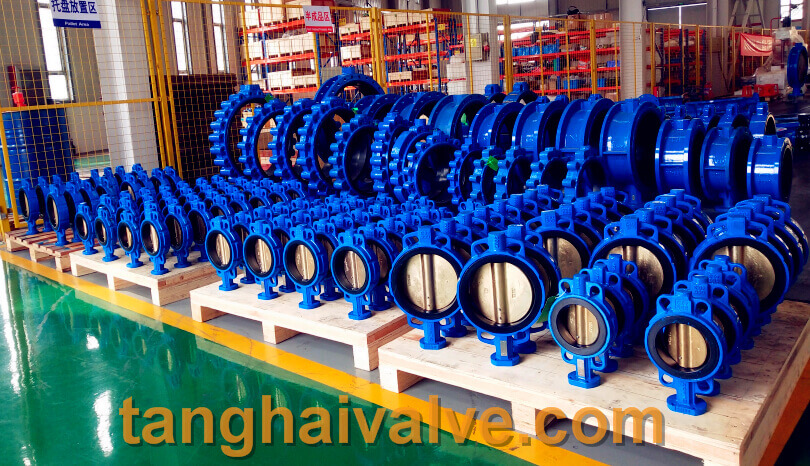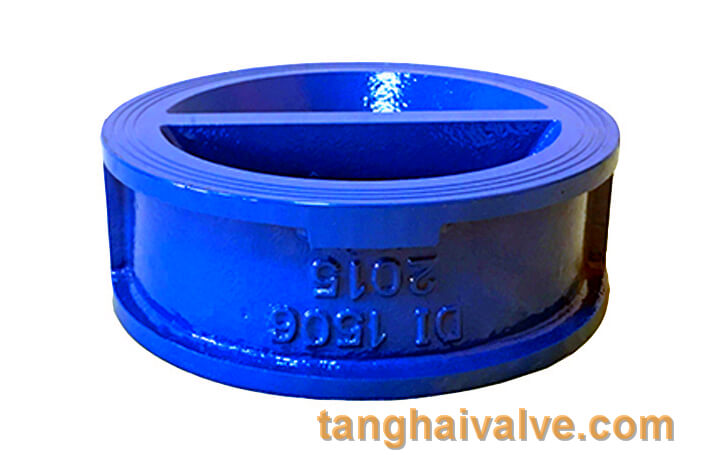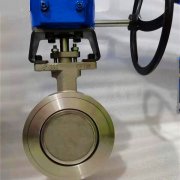Valve installation instructions and process precautions
Valve is a kind of mechanical product that is widely used in the construction of national economy. In the current market, the more commonly used valve types are butterfly valves, check valves, ball valves, globe valves, gate valves and regulating valves. For the correct installation method of the valve, the user should understand the following introduction.

ductile iron, DI, butterfly valve, manufacturer, center line, TH valve
1. Valve installation
Valves should generally be positioned before pipeline installation. The piping should be natural, and the position should not be hard to avoid leaving pre-stress. During installation, it is recommended to install with a lifting ring. When installing with a chain, pay attention to protective measures for the outer coating of the valve. When the valve is equipped with a bracket or transmission mechanism, the sling should be fixed on the valve hoist ring, and the sling should not be placed on the transmission mechanism; the sling or hoisting chain should not squeeze the external parts of the valve and its extension rod to avoid damage to the valve actuator , Causing the valve to be unable to switch or difficult to switch.
2. Welding of the valve

double plate check valve body
(1) After the valve is in place, the valve should be placed in the fully open position when preheating and welding the valve, otherwise, during the welding process, the ball of the ball valve and the gate plate of the gate valve will be stained with welding slag and put into production At this time, these attached welding slag will scratch the valve seat seal and cause internal leakage of the valve. In severe cases, the valve will fail.
(2) The valves must be supported on their respective bases or separately.
(3) After the valve is welded, if the valve needs to be rotated, a manual grease gun should be used to fill in grease. (4) Confirm that the sewage outlet and pressure outlet are closed.
(5) General ball valve installation has no directionality, but attention should be paid to the position of the operating side. Some ball valves are directional when installed, so they must be installed in accordance with the arrow mark on the valve body and cannot be reversed. For example, the inlet and outlet sides of some of the ball valves of the crude oil and product oil yards of the Western Pipeline use two types of valve seat sealing, one end uses a double piston effect valve seat, and the other end uses a self-draining seal valve seat. If installed in reverse, After commissioning, the valve will automatically release the pressure and a pipeline accident will occur.
3. Requirements after valve welding
(1) The valve should be filled with grease before pressure test after welding to ensure that the sealing surface of the valve is filled with grease, and the impurities attached to the sealing surface of the valve seat during welding are discharged with grease.
(2) Check the condition of the valve to ensure that all external joints are locked and not loose; confirm that the sewage outlet and pressure outlet are in a tightly locked state to prepare for pressure test.
(3) Operate the valve according to the pressure test plan and keep the valve in the specified position.
A valve is a device used to control fluid flow, pressure and direction. The fluid to be controlled can be liquid, gas, gas-liquid mixture or solid-liquid mixture. In oil, natural gas, coal, metallurgy and ore mining, processing and pipeline transportation systems; in petrochemical, chemical products, medicine and video production systems; in hydropower, thermal power and nuclear power generation systems; in urban construction In water supply and drainage heating and gas supply systems; in metallurgical production systems; in fluid systems of ships, vehicles, aircraft, aerospace and various sports machinery; in national defense production and new technology fields; in agricultural irrigation and drainage systems,, A large number of new varieties of valves are used.




 © Copyright 2020 Tianjin Tanghaidongyang Valve Co., Ltd. All Rights Reserved.
© Copyright 2020 Tianjin Tanghaidongyang Valve Co., Ltd. All Rights Reserved.